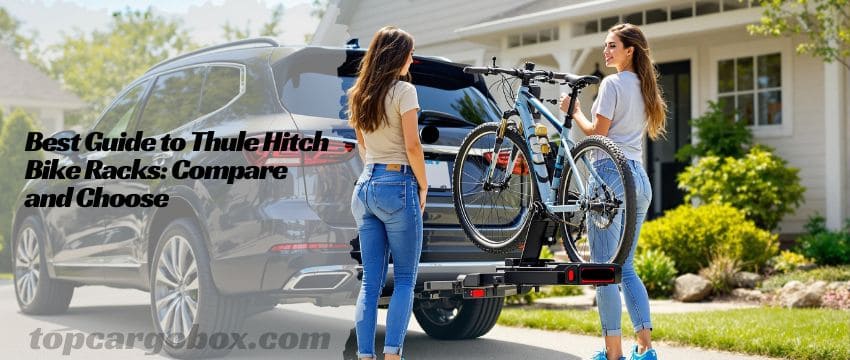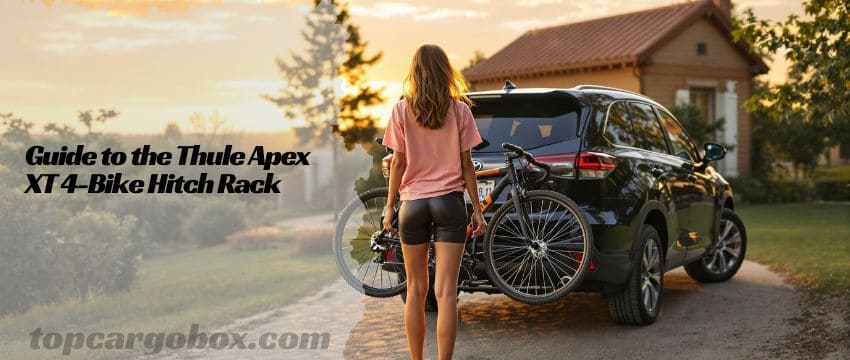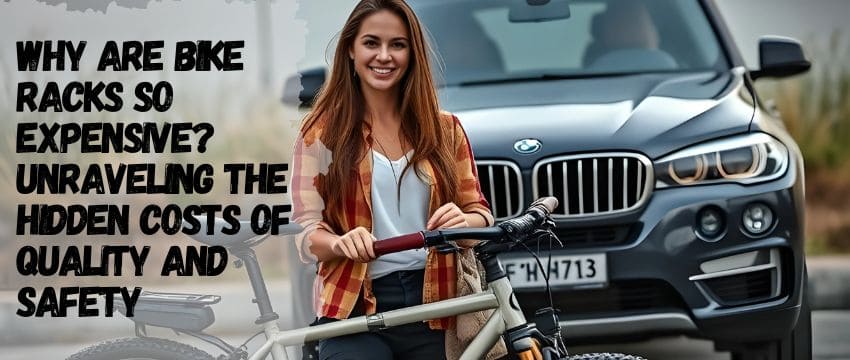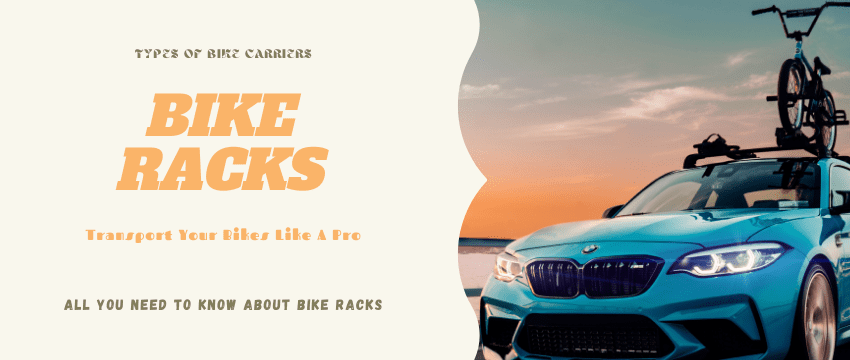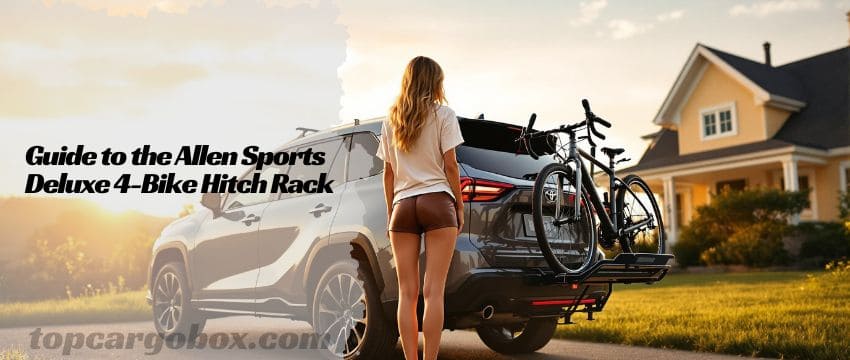How’s it going? So, you finally took the plunge and invested in a sweet new bike rack for your car. That’s awesome! Now you’re all set for those spontaneous weekend adventures, right? You can just throw the bikes on and hit the road without a second thought. But then, a tiny, nagging worry starts to creep into the back of your mind. You’re loading up your expensive mountain bikes, and you glance at the rack itself. It’s just… there. Attached to your car. A collection of metal, plastic, and locks. And you have to ask yourself the question: wait a minute, can someone just… steal my bike rack? For real?
Let’s not beat around the bush here. The unfortunate, frustrating, and totally-not-cool answer is a resounding yes. Absolutely, positively, without a doubt, bike racks can be stolen. I know, I know, it totally sucks. You just spent a good chunk of change on this thing to protect your even more expensive bicycles, and now I’m telling you the very device meant for security is itself a target. It feels like adding insult to injury, doesn’t it? Think about it from a thief’s perspective. A high-quality bike rack from a brand like Thule or Kuat can easily cost several hundred dollars. To a grunt looking for a quick score, that’s a tempting item left unattended on thousands of cars every single day. It’s not just about the rack, either; a stolen rack often means your bikes are gone, too. This isn’t just some paranoid fantasy; it’s a very real issue that cyclists and adventurers face all the time.
Why Would Anyone Even Steal a Bike Rack?
What’s up? Let’s be real, on the surface, someone stealing a bike rack seems totally bizarre, right? I get it, it’s not like a new TV you can just plug in. So what’s the actual point? Off the top of my head, the number one reason is straight-up cash. For real, the secondhand market for branded racks is absolutely huge. A thief can snatch a Thule off your car, give it a quick wipe, and flip it online for hundreds of bucks easy. It’s a low-risk, high-reward grunt for them—no need to break into a house, just some tools and a little nerve in a crowded lot. How’s that for a crummy side hustle?
But hey, sometimes the motive isn’t just greed—it’s plain old need. Sounds crazy, but it happens. Maybe another person sees your pristine, expensive setup and their own ride is falling apart; the temptation to just take it can be too much. Fair enough, it still totally sucks and isn’t right, but you can see how it goes down. And chill, the theft isn’t always for the whole thing! Those small, stupidly expensive parts like quick-release knobs and adapters get swiped all the time if they aren’t locked down. What a nightmare to replace, right?
Let’s not forget the most devastating scenario of all: your rack is just the gateway to the main prize. A thief might not even want the rack itself; they’re after the sweet bikes attached to it. If they can defeat your rack’s security or just unbolt the entire thing to take it somewhere quiet, they’ve hit the jackpot. Then they can remove your bikes at their leisure, and the rack is just a nice little bonus. How’s that for a terrible two-for-one deal? It makes you want to double-check every lock you own, doesn’t it?
How Do Thieves Actually Steal These Things?
Okay, so we know why they do it. Now, how’s it done? Knowing their methods is the first step to foiling their plans. The technique totally depends on the type of rack you have. Off the top of my head, let’s run through the common styles and their vulnerabilities.
Hitch Racks: These are the popular ones that slide into your vehicle’s trailer hitch. You’d think being metal and bolted into a solid hitch would make them impervious, right? Come on, think again. Many hitch racks use a simple hitch pin to hold them in place. A determined thief with a bolt cutter can snip that pin in seconds and walk off with your entire setup. Even worse, some cheaper or older models might not even use a locking hitch pin—it’s just a standard cotter pin! That’s like inviting trouble over for dinner. Higher-end models come with integrated locks, but let’s be honest, no lock is 100% perfect. A battery-powered angle grinder can make quick work of almost anything if a thief is bold enough.
Roof Racks: Now, these are a different beast. A roof rack system, like the various Thule roof bike racks compared on our site, is often a more permanent fixture. The crossbars are usually locked to the vehicle’s roof rails. The bike carriers themselves then attach to the crossbars. Theft here can be more component-based. A thief might target the expensive bike mounts themselves, especially if they’re quick-release. Or, if they have time and tools, they could attempt to remove the entire crossbar system. It’s a bit more conspicuous than messing with a hitch, so it’s less common, but still possible.
Trunk-Mounted Racks: Oh, man. These are, and I say this with love for their affordability and convenience, the easiest targets of all. Most trunk racks are held on by a series of straps, hooks, and maybe a single central lock if you’re lucky. A thief can literally just unbuckle the straps and walk away with the whole thing in under thirty seconds. They offer almost zero theft protection for the rack itself. Their purpose is purely transportation, not security. If you’re using one of these, you absolutely cannot leave it unattended on your car, ever.
Your First Line of Defense: Choosing a Theft-Resistant Rack
Alright, enough with the scary stuff. Let’s talk solutions. Your best defense starts before you even buy the thing. Choosing a rack designed with security in mind is the single biggest step you can take. It’s a long shot to expect a $100 rack to have the same security features as a $700 one. You get what you pay for, and in this case, you’re paying for peace of mind.
Look for integrated locking systems. This is key. High-quality hitch racks will include a lock cylinder that bolts the rack’s stem directly into the hitch receiver, making it impossible to remove the hitch pin without the key. Brands like Kuat are legendary for this. The Kuat NV 2.0 bike rack, for instance, has a top-notch locking hitch mechanism that is seriously tough to beat. For roof racks, you want locking cores on the feet that attach the crossbars to your car, and also on the bike carriers themselves. This turns a collection of parts into a single, locked-down system.
The materials matter, too. A rack made from lightweight, cheap aluminum tubes is easier to cut or break than one made from hardened steel or robust, reinforced composites. It’s not just about the bikes; a sturdy construction makes the rack itself harder to compromise. Don’t just look at the price tag; look at the build quality and read reviews that specifically mention security and durability. It’s what separates a temporary solution from a long-term investment.
Feature/Specification | What to Look For & Why It Matters |
|---|---|
Integrated Hitch Lock | A built-in lock that secures the rack’s stem inside the hitch receiver, preventing simple removal. This is non-negotiable for security. |
Frame Lock Cables | High-quality, thick, vinyl-coated steel cables with robust locks to secure your bike frames to the rack. Avoid thin, cable-style locks. |
Wheel Lock Straps/Arms | Locking arms that clamp down on the wheels themselves, immobilizing the bike on the rack and adding a second layer of security. |
Construction Material | Hardened steel or reinforced, high-grade aluminum construction. Makes the rack itself difficult to cut or break with simple tools. |
Locking Cores | The ability for all components (hitch pin, bike arms, etc.) to be locked with the same key. Convenience is a huge security benefit. |
Security Ratings | Look for racks whose locks have independent security ratings (e.g., sold secure). This tells you they’ve been tested against attacks. |
Beyond the Rack: Using Additional Locks and Cables
So you’ve got a rack with some good built-in locks. Feeling pretty good? You should! But here’s a pro tip: never rely solely on the locks that come with the rack. I’m serious. For real? For real. Think of them as your baseline security. To really sleep well at night, you need to add layers. How many times do I have to tell you, layers are everything in security!
This is where a serious, heavy-duty U-lock or a beefy chain lock comes into play. Even if your rack has locking arms that hold the wheels, you should still run a U-lock through your bike’s rear triangle (the frame) and around a solid part of the rack itself. This physically bonds the bike to the rack. If a thief manages to defeat the rack’s mechanism, they still have to deal with a hardened steel U-lock, which is a whole different level of hassle. It’s a fantastic deterrent.
For multiple bikes, a long, thick chain lock passed through all the frames and the rack structure is a great move. Yeah, it’s a bit more of a grunt to set up, but is five minutes of extra effort worth saving thousands of dollars in bikes and gear? Absolutely. You can also use these additional locks to secure your bikes to a fixed object if you’re parked for a long time, like at a trailhead. Lock the bikes to the rack, and then lock the whole assembly to a permanent bike rack or a stout post. Now the thief has to defeat multiple high-security locks and figure out how to cut through a permanent structure. Not gonna happen.
The Golden Rule: Never Leave Your Rack Unattended
This might seem like the most obvious point, but you’d be shocked how many people ignore it. The single most effective way to prevent your bike rack from being stolen is to not give anyone the opportunity to steal it. If you’re done with your ride and you’re heading home, take the rack off your car and put it in the garage or trunk. I get it, it’s a pain. It’s one more thing to do after an exhausting day. But dude, it’s the best insurance policy you have.
This is especially critical for trunk-mounted racks and for any rack that’s left on a car parked on the street overnight. You’re basically advertising a free, expensive accessory for anyone walking by in the dark. Even a locked hitch rack is not invincible if left unattended for twelve hours. A thief with time and privacy is a successful thief. Make your gear inconvenient to steal, and most thieves will just move on to an easier target. It’s like not leaving your laptop sitting on the passenger seat of your car. It’s just common sense, but for bike gear.
What to Do If the Worst Happens
Okay, let’s say you walk out to the parking lot after a movie, and your heart just drops. It’s gone. The rack, the bikes, everything. Oh snap! First of all, take a deep breath. Panicking won’t help. The first thing you need to do is call the police and file a report immediately. Give them the make, model, and most importantly, the serial numbers for both your bikes and your rack. Wait, you did write down the serial numbers, right? Exactly. This is a step so many people skip. Those numbers are the only way the police can identify your property if it’s recovered. It’s also crucial for your insurance claim.
Speaking of insurance, get on the phone with your insurance company right away. Your auto insurance might cover the rack itself, especially if it’s permanently attached, but your homeowners or renters insurance will almost certainly cover the bicycles. Know your policy details beforehand so you aren’t surprised. After you’ve handled the official stuff, get the word out. Post pictures and details on local community boards, Facebook groups, and cycling forums. Scour online marketplaces like Craigslist and Facebook Marketplace. Sometimes you get lucky and find your stuff listed by a clueless thief.
The Psychological Game: Making Your Setup Look Like a Fortress
Here’s a less technical but equally important tactic: play mind games with potential thieves. Security is often about perception. You want your bike and rack setup to look like such a massive headache to steal that a thief looks at it and just thinks, “forget it.” How do you do that? It’s all about visual deterrents.
Using multiple, big, obvious locks is a huge part of this. A single, thin cable lock whispers “easy target.” A U-lock on the frame, a chain on the wheels, and the integrated rack locks scream “move along, nothing to see here.” You can even get locks with bright, colorful covers to make them even more visible. Parking in well-lit, high-traffic areas is another no-brainer. Thieves thrive on darkness and privacy. If you’re under a bright light near a cafe with big windows, you’ve just added a bunch of unwitting witnesses to your security system.
Special Considerations for High-Value E-Bikes
If you’re rolling with an e-bike, the stakes are even higher. Those things are like the Ferraris of the bike world now, often costing many thousands of dollars. The same old security rules don’t always apply because the reward for a thief is so much greater. A standard cable lock on an e-bike is basically just a polite suggestion. You need industrial-grade security.
Thankfully, the market has responded. There are racks specifically designed to handle the unique weight and shape of e-bikes, and their security features are usually top-tier. Checking out a dedicated Thule e-bike rack guide will show you models built with heftier locks and stronger construction to withstand the extra weight and deter determined thieves. The principle of layering your locks is doubly important here. You should be using the absolute best U-lock or chain lock you can buy, without question. It’s not a big deal to spend an extra $150 on a lock when it’s protecting a $5,000 investment.
It’s Not All Doom and Gloom: The Bright Side
After all this talk about theft and security, you might be feeling a little under the weather about the whole idea of bike racks. But hang tight! Don’t let the fear of theft rob you of the incredible joy and freedom a good bike rack provides. For real, the ability to easily take your bike to new trails, explore different cities on two wheels, and enjoy adventures with friends and family is absolutely priceless.
The point of all this isn’t to scare you away. It’s to empower you. Knowing the risks means you can smartly mitigate them. By choosing the right gear, like a super-secure Kuat NV 2.0 or a well-thought-out Thule system, and by adopting smart habits like using extra locks and removing the rack when not in use, you reduce your risk to a tiny fraction. You can confidently use your rack, knowing you’ve done everything possible to protect your investment. It is what it is—there are risks in life—but they are manageable. So get out there, explore, and have an amazing time. Just be smart about it.
Our team is creating outdoor-gear relevant articles with passion. If our articles can help you to find the correct solutions for your questions, we will be happy about that. In the content creation process, we usually collect accurate and useful information online or offline to compile our content in an organized way. Consequently, we can guarantee that you can discover some expected answers to your questions. We appreciate your time on our site.


